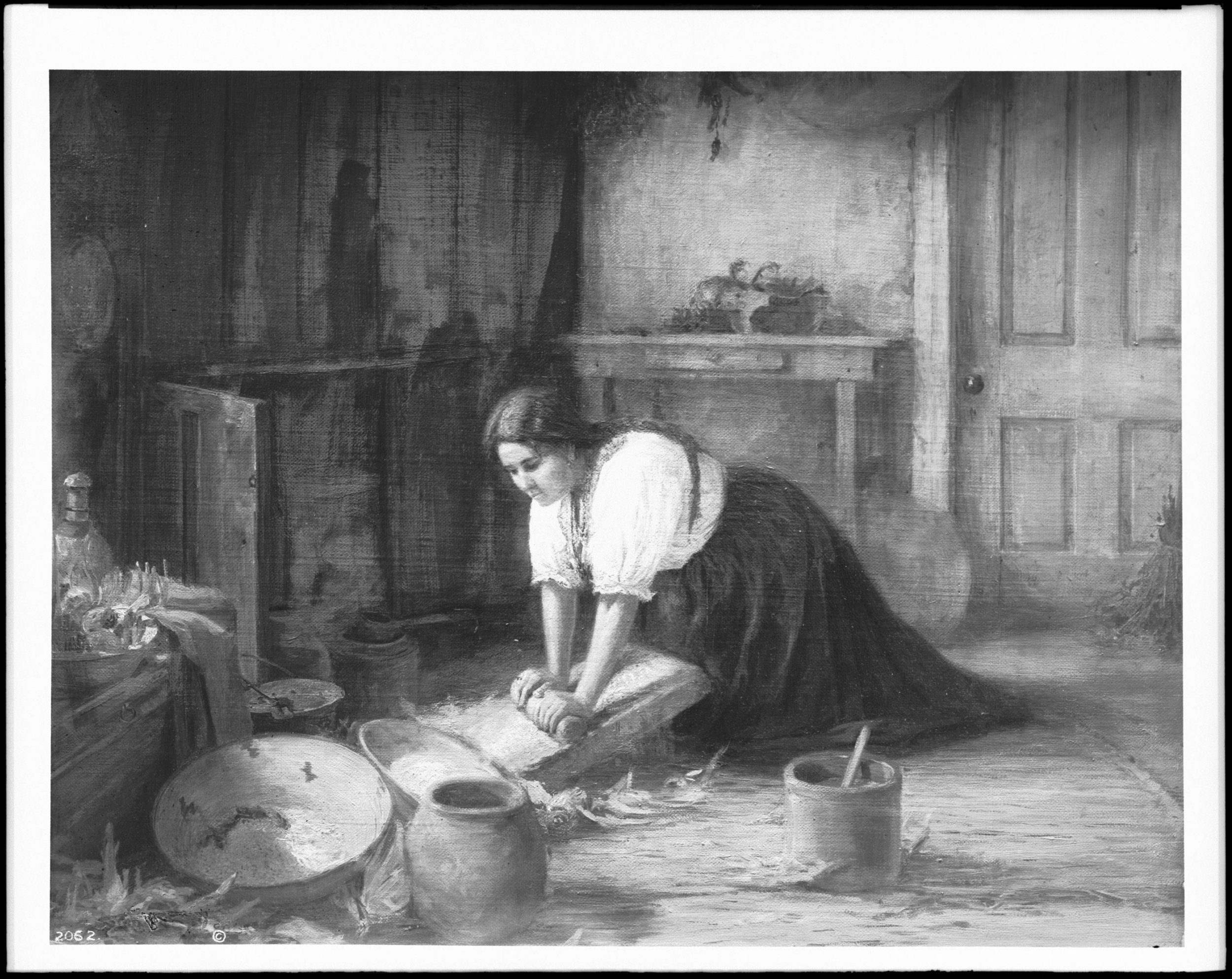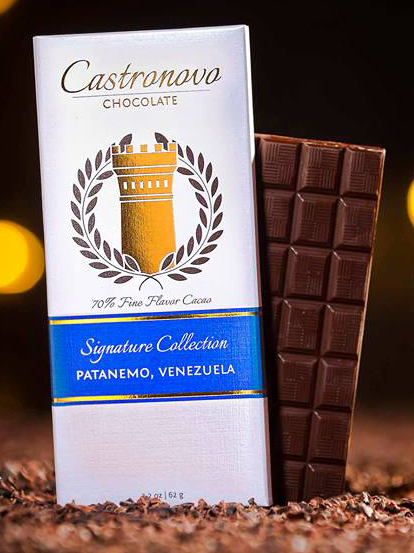Maricel Presilla, Culinary Historian and Chocolate Expert
The Details
Occupation: Culinary historian, chocolate expert, James Beard Award-winning chef, founder of the International Institute of Chocolate and Cacao Tasting and the International Chocolate Awards, author of The New Taste of Chocolate, among other books
Location: Hoboken, New Jersey
Known For: Advocating for fine flavor cocoa across the globe
Other Random Facts: Maricel has a PhD in medieval Spanish history and taught at the college level before deciding to open restaurants and work in the chocolate industry. She also took all of the photos of cacao pods and peppers in her books The New Taste of Chocolate and Peppers of the Americas, respectively, while in the field. (She grew her own peppers, of course, because that’s what you do when you’re as awesome as Maricel Presilla.)
The Questions
Megan Giller: What did you want to be when you were a kid?
Maricel Presilla: A historian and a geographer.
Photo by Map Chocolate
Megan: Why chocolate?
Maricel: It is in my DNA. On my paternal side of the family, I am a descendant of cacao farmers from the northeastern mountains of Cuba. My grandmother was born in a palm-thatched home under a great Ceiba tree in the middle of a cacao farm while my great-grandfather was buried on the edge of the farm. There is another important reason.
“
Chocolate is in my DNA.
“
I am a historian, as planned since childhood, and cacao is one of the most important food plants to come from the Americas. It was imbued with symbolic and ritual meaning and so was chocolate, which was invented by women who in their eternal quest to extract every ounce of usefulness from every food stumbled onto something completely different from the fresh cacao beans once they dried them, toasted them and ground them to a paste to be dissolved in liquid and enriched with corn and other flavorings.
Megan: Do you think of yourself as a Woman (capital “W”) in the chocolate industry? Why or why not? And if yes, what does it mean to be a Woman in chocolate?
Maricel: I process cacao for my sensory-profiling work, and I cook with chocolate as a chef. I am also in the business of promoting cacao farmers and helping them market their products. So yes, I am a Woman in Chocolate with a capital W. In my job as a founder of the International Institute of Chocolate and Cacao Tasting and the International Chocolate Awards, the largest independent chocolate competition in the world, now in its
Judging the International Chocolate Awards. Here’s what it was like when I judged.
seventh year, I get to take the pulse of the chocolate industry as I taste thousands of samples—bars, bonbons, spreads—submitted by chocolate makers and chocolatiers from all over the world. My opinions regarding quality and excellence matter, and they trickle down to the farmers growing fine cacao.
Maricel’s book The New Taste of Chocolate
Megan: What’s your daily routine, starting with waking up and ending with bedtime?
Maricel: I don’t have deep set routines, and it all changes according to my deadlines. When I am writing, which is usually the case, I don’t sleep much. After being awake all night, I don’t put on my makeup but say sweet things to my two macaws and Amazon parrot, who greet me at the top of their lungs the minute they hear my steps. When that happens, I have to get the dogs out in a hurry because they will start howling like wolves when they hear the parrot’s first high-pitched squeak. Then I put some music on (love Carlos Vives and so do my birds) and sit on the stairs outside my kitchen to look at my pepper garden at sunrise, holding my first cup of coffee of the day.
Cucharamama, one of Maricel’s restaurants in Hoboken
During pepper season I check my plants several times a day. I am obsessed. When it starts getting cold, I can hold court in bed surrounded by stacks of books, mail, The New York Times, a drawing pad, and breakfast tray. I get a lot done in my boudoir unless my dogs decide to visit and jump in to eat my food. From then on, it is back to the office for paperwork, research, or writing and on to the restaurants. Writing this has made me realize that I don’t exercise in the normal sense of the term. I guess I do a lot of walking when I am visiting farms or doing research for food…then I don’t stop moving.
I love evenings, and when I am not eating at my own restaurants, I like to cook at home (I always have recipes to test) for my husband and the occasional friend staying with us. I like to read and paint at night (I am a serious doodler), and I have no set time to go to bed unless I am exhausted from traveling and suffering from jet lag.
Megan: How do you find inspiration and creativity in your day-to-day work?
Maricel: I haven’t thought about that. But I am insanely curious and an omnivore when it comes to food and culture. When something interests me, and it can be anything (the best pie crust, the most effective fertilizer for peppers, the latest cuisine in my radar, or a magnificent cacao), I go deep and it can be all-consuming and inspiring. I never get bored when I am in my element, which is rich in stimuli (mostly books) and conducive to thinking.
Megan: What are you most proud of in your business life?
Maricel: I am proud of developing several ideas and taking them to completion to the best of my ability. I haven’t done anything superficial or inconsequential in my entire life. I am very proud of my work in Venezuela in the 80’s and 90’s, helping makers and farmers find markets for both Venezuelan chocolate and cacao, and promoting the concept of single origin here in the US when so few little knew what it meant then.
Megan: What would you tell yourself 10 or 20 years ago that you wish you knew then?
Maricel: It is better to accept the course of one’s life as part of a divinely ordained plan. Whatever I can say to my younger self now would probably force a course change, and I would never know if those adjustments could actually contribute to make me happier or more secure today. Perhaps, if I had changed a thing or two (just enough to make me a different person in the large scheme of things), you would not find me interesting enough to be featured in your story. Mistakes often make you.
Megan: What’s a challenge that keeps you up at night?
Maricel: Everything keeps me awake all night. I think best at night when everyone else is asleep. Deadlines bother me because I have an almost irrational sense of responsibility and want to be true to my word. A deadline means a promise that needs to be kept. When one wears as many hats as I do, being pulled in opposite directions is an occupational hazard.
Aztec woman pouring chocolate (how they used to mix it!)
Cacao farmers Dina Ladena and Rosalva Ventura in Belize, photo by Taza Chocolate
Megan: Why do you think women are associated so strongly with chocolate?
Maricel: Well, I already said it: Women invented chocolate. Before the age of industrialization, they had a more prominent role as the makers of chocolate drinks and helping in the chores of cacao farming. Even after chocolate became a commodity for the masses, traditional chocolate recipes were kept alive by women even in places where the great cacaos of old had been replaced by less flavorful cultivars. Such is the case of Mexico and Mesoamerica.
Megan: Why do you think there aren’t as many women making chocolate as men?
Maricel: To start, women can do everything. There are technically minded women who can tackle any challenge posed by complex processing equipment at a chocolate factory. But there are women who prefer being chocolatiers and using chocolate in pastry…not because these occupations are any easier but because that’s their choice. I also believe that creating a chocolate factory requires a serious financial commitment, and many women enter into it as part of a team, particularly with their spouses. What I have seen in such situations is that women can play significant roles in many levels, not just in management or marketing.
Megan: What’s the one thing you wish people knew about chocolate?
Maricel: The simplest truth, that fine chocolate can only be made with fine cacao.
Megan: Name a woman (or several women), past or present, whom you admire.
Maricel: Too many to name here. But I admire the women of Mesoamerica who invented chocolate and those who still make chocolate from cacao beans ground on a three-legged grinding stone like the metate. It is enormously hard.
Woman grinding cocoa beans on a metate (left); Castronovo’s award-winning Venezuela bar
I also have profound admiration for women who have taken a leap to become chocolate makers and run their own factories like Lisi Montoya of Shatell Chocolate in Peru, Denise Castronovo of Castronovo Chocolate in Florida, and Mayumi Ogata of Cacao Hunters, a Japanese woman who started sourcing cacao all over Colombia before opening her own factory in Popayán.
Know a woman in chocolate you’d like to nominate to be part of my Q&A series? Have a question you’d like to ask as part of my Q&A series? Email me at megan@chocolatenoise.com!
Note: This story contains affiliate links.










